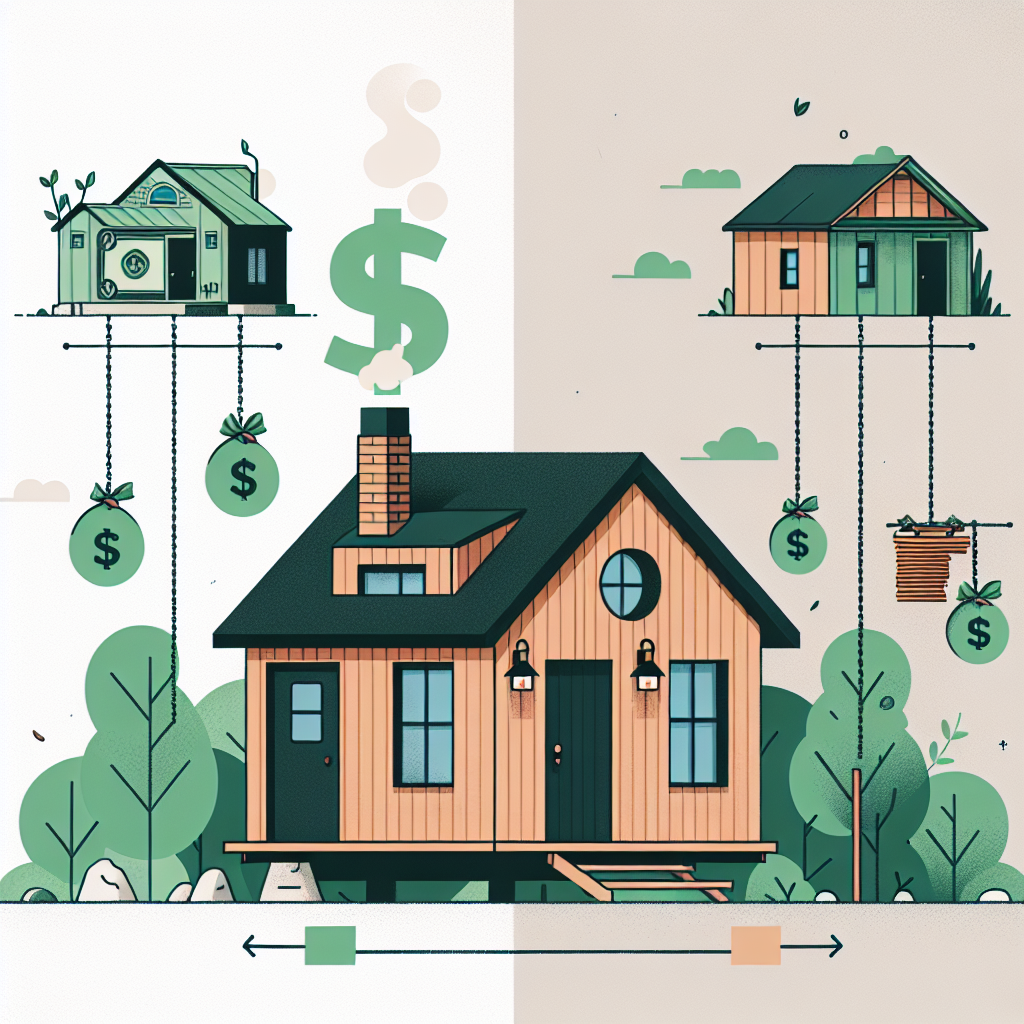-
Table of Contents
- Why Tiny Homes Are the Ultimate Cash Flow Solution Today
- The Financial Benefits of Tiny Homes
- Case Study: The Smith Family
- Environmental Sustainability
- Example: Eco-Friendly Tiny Home Community
- Flexibility and Mobility
- Case Study: Digital Nomad Lifestyle
- Community and Social Impact
- Example: Veterans Village
- Investment Opportunities
- Case Study: Tiny Home Rental Business
- Challenges and Considerations
- Example: Navigating Zoning Laws
- Conclusion
Why Tiny Homes Are the Ultimate Cash Flow Solution Today

In an era where financial stability and sustainability are becoming increasingly important, tiny homes have emerged as a revolutionary solution. These compact living spaces offer a myriad of benefits, from cost savings to environmental sustainability. This article delves into why tiny homes are the ultimate cash flow solution today, supported by relevant examples, case studies, and statistics.
The Financial Benefits of Tiny Homes
One of the most compelling reasons to consider tiny homes is the significant financial benefits they offer. Here are some key points:
- Lower Initial Costs: The average cost of a tiny home ranges from $30,000 to $60,000, compared to the median price of a traditional home, which is around $300,000.
- Reduced Utility Bills: Tiny homes consume less energy, leading to lower utility bills. According to the U.S. Energy Information Administration, the average monthly energy bill for a tiny home is about $30, compared to $115 for a traditional home.
- Minimal Maintenance Costs: With less space to maintain, tiny homes incur lower maintenance costs. This includes everything from cleaning to repairs.
- Lower Property Taxes: In many jurisdictions, tiny homes are classified differently from traditional homes, resulting in lower property taxes.
Case Study: The Smith Family
The Smith family from Oregon decided to downsize to a tiny home in 2018. They reported saving over $1,000 per month on mortgage payments, utilities, and maintenance. This allowed them to pay off their student loans and start a college fund for their children.
Environmental Sustainability
Tiny homes are not just financially beneficial; they are also environmentally friendly. Here’s how:
- Reduced Carbon Footprint: Tiny homes require fewer building materials and less energy to heat and cool, significantly reducing their carbon footprint.
- Less Waste: The smaller space encourages minimalism, leading to less waste and more sustainable living practices.
- Eco-Friendly Materials: Many tiny homes are built using sustainable materials, further reducing their environmental impact.
Example: Eco-Friendly Tiny Home Community
In 2020, a community of eco-friendly tiny homes was established in Austin, Texas. The community uses solar panels, rainwater harvesting systems, and composting toilets, making it a model for sustainable living. Residents report a 50% reduction in their overall environmental impact.
Flexibility and Mobility
Tiny homes offer unparalleled flexibility and mobility, making them an attractive option for many people. Here’s why:
- Mobility: Many tiny homes are built on wheels, allowing owners to move them easily. This is ideal for those who want to travel or relocate frequently.
- Customizability: Tiny homes can be customized to meet individual needs and preferences, from layout to interior design.
- Land Use: Tiny homes can be placed on smaller plots of land, making them ideal for urban areas where space is limited.
Case Study: Digital Nomad Lifestyle
Jane and Mark, a couple from California, built a tiny home on wheels to support their digital nomad lifestyle. They travel across the United States, working remotely while enjoying the freedom and flexibility that their tiny home provides. Their story has inspired many others to consider this lifestyle.
Community and Social Impact
Tiny homes are also making a significant social impact. Here’s how:
- Affordable Housing: Tiny homes provide an affordable housing solution for low-income families and individuals.
- Homelessness Solutions: Many cities are using tiny homes to address homelessness. These homes offer a safe, dignified living space for those in need.
- Community Building: Tiny home communities foster a sense of community and social interaction, which is often lacking in traditional neighborhoods.
Example: Veterans Village
In 2019, a tiny home village for veterans was established in Kansas City, Missouri. The village provides housing, job training, and support services for homeless veterans. Since its inception, the village has helped over 100 veterans transition to stable housing and employment.
Investment Opportunities
Tiny homes are not just for personal use; they also offer lucrative investment opportunities. Here’s how:
- Rental Income: Tiny homes can be rented out on platforms like Airbnb, providing a steady stream of rental income.
- Vacation Homes: Tiny homes can be used as vacation rentals, attracting tourists looking for unique and affordable accommodations.
- Resale Value: The growing popularity of tiny homes means that they often retain or even increase in value over time.
Case Study: Tiny Home Rental Business
John, an entrepreneur from Colorado, started a tiny home rental business in 2017. He now owns five tiny homes, which he rents out on Airbnb. His business generates over $100,000 in annual revenue, proving that tiny homes can be a profitable investment.
Challenges and Considerations
While tiny homes offer numerous benefits, there are also challenges and considerations to keep in mind:
- Zoning Laws: Zoning laws and building codes vary by location and can impact where you can place a tiny home.
- Space Limitations: The limited space in a tiny home may not be suitable for everyone, especially larger families.
- Financing: Securing financing for a tiny home can be challenging, as traditional mortgage lenders may not offer loans for these types of properties.
Example: Navigating Zoning Laws
In 2021, a couple in New York faced challenges with local zoning laws when trying to place their tiny home on a plot of land. They worked with local officials and eventually succeeded in getting the necessary permits, highlighting the importance of understanding and navigating zoning regulations.
Conclusion
In summary, tiny homes offer a compelling solution for those seeking financial stability, environmental sustainability, and flexibility. They provide significant cost savings, reduce environmental impact, and offer unique investment opportunities. While there are challenges to consider, the benefits of tiny homes make them an attractive option for many people today. As more individuals and communities embrace this innovative housing solution, tiny homes are poised to play a significant role in shaping the future of housing.
Whether you are looking to downsize, invest, or simply live a more sustainable lifestyle, tiny homes offer a versatile and practical solution. As the examples and case studies in this article demonstrate, tiny homes are not just a trend but a viable and impactful way to improve cash flow and quality of life.








